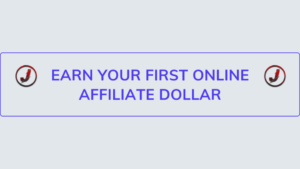Finding effective ways to make money online can significantly boost your income. In this guide, we explore the best passive income ideas that you can implement to generate revenue consistently. Whether you’re new to online earning or looking to diversify your income streams, these methods offer valuable insights to help you succeed.
Discover Lucrative Affiliate Marketing Strategies
Affiliate marketing is one of the most effective ways to make money online. It involves promoting products or services and earning a commission for every sale made through your referral. This section will help you understand how to select the best programs and maximize your earnings.
I strongly believe that choosing the right affiliate programs is crucial for success. My recommendation is to look for programs that offer high commissions and reliable tracking. This way, you can be sure you are rewarded for every sale you generate. I advise you to research and compare different programs before making a decision.
How to Select High-Commission Affiliate Programs
When selecting high-commission affiliate programs, most importantly, consider the product’s quality and relevance to your audience. I recommend you to choose products that align with your niche and offer value to your readers. Additionally, check the program’s commission structure and payment terms to ensure they are favorable.
My suggestion is to start with affiliate networks like Awin, ClickBank, or CJ Affiliate, where you can find a variety of high-paying programs. I point out that some programs offer recurring commissions for subscription-based products, which can provide a steady income stream. Researching and reading reviews can help you identify the best opportunities.
I advise you to also consider the support and resources provided by the affiliate program. Many programs offer marketing materials, training, and dedicated account managers to help you succeed. Choosing a program with robust support can make a significant difference in your affiliate marketing journey.
Finally, I recommend you to monitor the performance of your chosen programs regularly. Track your earnings, click-through rates, and conversion rates to determine which programs are most profitable. This data will help you focus on the best-performing programs and optimize your efforts.
Effective Promotion Tactics for Affiliate Products
Promoting affiliate products effectively requires a strategic approach. My advice is to create engaging content that highlights the benefits of the products you are promoting. This can include blog posts, reviews, tutorials, and social media content. I believe that authenticity is key, so always provide honest opinions and experiences.
I suggest using multiple channels to promote your affiliate products. In addition to your blog, consider using email marketing, social media platforms, and video content. Each channel has its unique strengths and can help you reach a broader audience. I recommend you to tailor your content to each platform for maximum impact.
Another effective tactic is to use SEO to drive organic traffic to your affiliate links. I advise you to optimize your content with relevant keywords, including the primary keyword “ways to make money online,” to improve your search engine rankings. Additionally, use internal and external links to boost your content’s authority and visibility.
I strongly believe that offering bonuses or incentives can increase your affiliate sales. For example, you can provide exclusive discounts, free resources, or access to premium content for readers who purchase through your affiliate links. This adds value and encourages your audience to take action.
Utilizing Content Marketing to Boost Affiliate Sales
Content marketing is a powerful tool for boosting affiliate sales. My recommendation is to create high-quality, informative content that addresses your audience’s needs and interests. This builds trust and positions you as an authority in your niche, increasing the likelihood of conversions.
I suggest incorporating affiliate links naturally within your content. Avoid overloading your articles with links, as this can appear spammy and reduce reader trust. Instead, place links where they provide the most value, such as within product reviews, tutorials, and relevant articles. I advise you to disclose your affiliate relationships transparently to maintain credibility.
I believe that creating evergreen content is essential for long-term affiliate success. Evergreen content remains relevant and valuable over time, continuously attracting traffic and generating sales. Focus on topics that have lasting appeal and update your content periodically to keep it fresh and accurate.
I recommend leveraging different content formats to reach diverse audiences. This can include blog posts, videos, infographics, and podcasts. Each format appeals to different types of learners and can expand your reach. By diversifying your content, you can engage more readers and increase your affiliate sales.
Tracking and Optimizing Your Affiliate Links
Tracking and optimizing your affiliate links is critical for maximizing your earnings. I advise you to use tools like Click Magic and Voluum to monitor your performance. This data will help you identify which links are generating the most clicks and conversions.
I suggest regularly analyzing your traffic sources to understand where your audience is coming from. This information can guide your marketing efforts and help you focus on the most effective channels. For example, if you notice that social media drives significant traffic, I recommend you to invest more time and resources into that platform.
My advice is to A/B test different elements of your affiliate campaigns to find what works best. This can include testing different headlines, call-to-actions, and link placements. By experimenting and analyzing the results, you can optimize your strategies and improve your conversion rates.
Finally, I recommend you to stay updated with the latest trends and best practices in affiliate marketing. The industry is constantly evolving, and staying informed will help you adapt and maintain your competitive edge. Join affiliate marketing communities, attend webinars, and read industry blogs to keep learning and growing.
Maximize Profits with Email Marketing Techniques
Email marketing is one of the most effective ways to make money online. By leveraging targeted email campaigns, you can build strong relationships with your audience and drive conversions. I believe that implementing the right email marketing strategies can significantly boost your profits and help you achieve your business goals.
My advice is to focus on building a quality email subscriber list and crafting compelling email campaigns. Additionally, utilizing automation tools and analyzing performance metrics will streamline your efforts and optimize your results. This comprehensive approach ensures that you maximize the potential of email marketing.
Email Marketing Recommendations
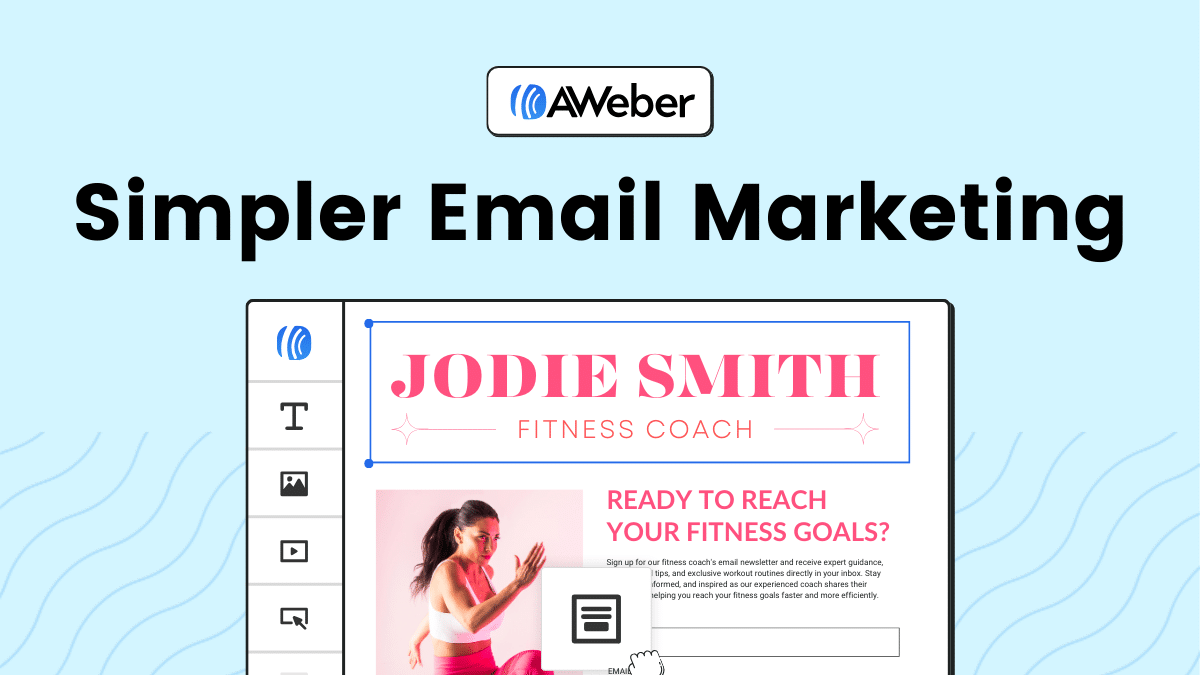 Aweber
| 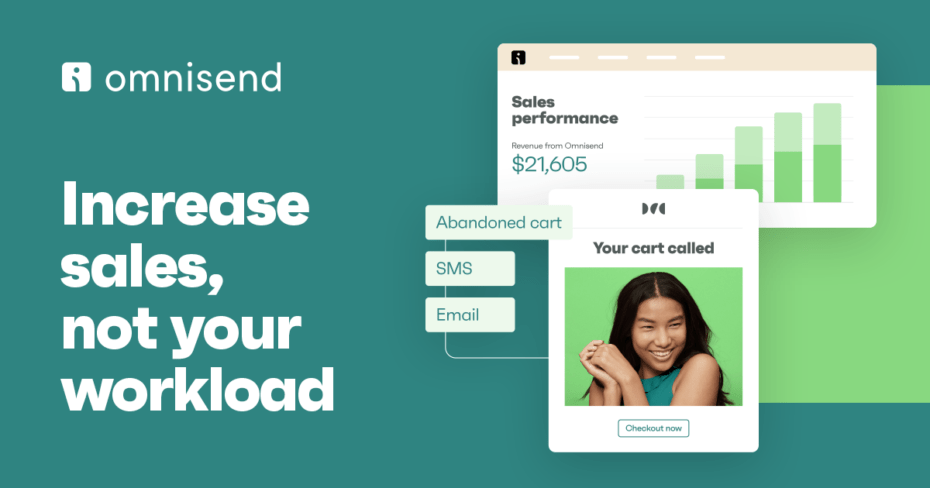 Omnisend
| 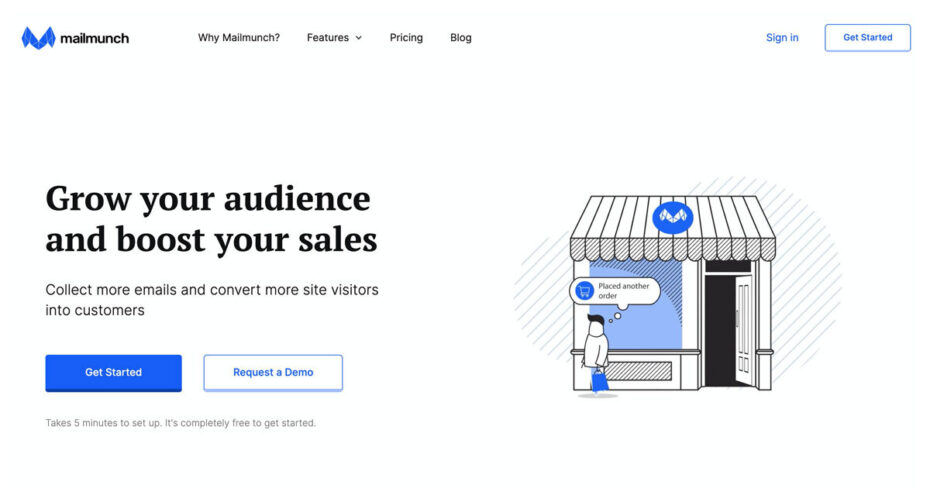 Mailmunch
|
Building a Quality Email Subscriber List
I suggest starting with building a quality email subscriber list. Most importantly, focus on attracting engaged subscribers who are genuinely interested in your content. I recommend you to create valuable lead magnets, such as eBooks, checklists, or exclusive content, to entice visitors to join your list.
My recommendation is to use opt-in forms strategically placed on your website. I advise you to experiment with different form placements, such as pop-ups, sidebar forms, and exit-intent forms, to see which ones generate the most sign-ups. Providing a clear value proposition will also encourage more visitors to subscribe.
I strongly believe that segmenting your email list can enhance your email marketing effectiveness. By categorizing subscribers based on their interests and behaviors, you can send more personalized and relevant content. This approach increases engagement and reduces the likelihood of unsubscribes.
I point out that maintaining a clean email list is crucial for deliverability. I advise you to regularly remove inactive subscribers and use double opt-in to ensure the quality of your list. This practice helps you maintain a strong sender reputation and improves your email deliverability rates.
Crafting Compelling Email Campaigns
Creating compelling email campaigns is essential for driving conversions. My suggestion is to start with a captivating subject line that grabs the reader’s attention. I recommend you to keep it short, clear, and intriguing to encourage opens. Personalization, such as using the recipient’s name, can also make your emails stand out.
I advise you to focus on providing valuable content in your emails. Most importantly, ensure that your emails are informative, engaging, and relevant to your audience. I believe that including a clear call-to-action (CTA) will guide your readers towards the desired action, whether it’s making a purchase, signing up for a webinar, or downloading a resource.
I recommend using a mix of content types, such as text, images, and videos, to make your emails more engaging. Additionally, I suggest you to keep your emails visually appealing with a clean and responsive design. This ensures that your emails look great on any device and enhances the overall user experience.
My advice is to test different elements of your email campaigns to find what works best. A/B testing subject lines, CTAs, and email content can provide valuable insights into your audience’s preferences. I believe that continuous testing and optimization will help you improve your email campaign performance over time.
Automation Tools for Streamlining Email Marketing
Automation tools are essential for streamlining your email marketing efforts. I strongly believe that using these tools can save you time and improve your efficiency. I recommend you to explore options like Mailmunch, ActiveCampaign, and ConvertKit, which offer robust automation features.
I advise you to set up automated email sequences for different stages of the customer journey. For example, you can create welcome series for new subscribers, nurture sequences for leads, and re-engagement campaigns for inactive subscribers. Automation ensures that your audience receives timely and relevant content without manual intervention.
My suggestion is to use behavior-triggered emails to enhance personalization. These emails are sent based on specific actions taken by your subscribers, such as downloading a resource or making a purchase. I believe that behavior-triggered emails are more relevant and can significantly boost engagement and conversions.
I recommend you to regularly review and optimize your automation workflows. Analyzing the performance of your automated emails will help you identify areas for improvement. I advise you to adjust your sequences based on the data to ensure they remain effective and aligned with your goals.
Analyzing Email Campaign Performance Metrics
Analyzing email campaign performance metrics is crucial for optimizing your strategy. I point out that tracking key metrics like open rates, click-through rates, conversion rates, and unsubscribe rates will provide insights into your campaign’s effectiveness. This data helps you understand what resonates with your audience and what needs improvement.
I recommend using tools like Google Analytics and your email service provider’s analytics dashboard to monitor your campaign performance. My advice is to set specific goals and KPIs for each campaign to measure success. For example, you can track the number of leads generated, sales made, or website traffic driven by your emails.
I believe that segmenting your performance data can provide deeper insights. By analyzing metrics for different subscriber segments, you can identify trends and preferences within specific groups. This information allows you to tailor your content and improve overall campaign effectiveness.
Finally, I advise you to use the insights gained from your analysis to make data-driven decisions. Continuously testing, analyzing, and optimizing your email campaigns will help you refine your strategy and achieve better results. I strongly believe that a data-driven approach is key to maximizing the potential of your email marketing efforts.
Start Blogging for Passive Income and Traffic
Blogging is one of the most effective ways to make money online while also driving traffic to your website. By sharing valuable content, you can attract a loyal audience and generate passive income through various monetization methods. I believe starting a blog is a fantastic way to build a sustainable online business.
My suggestion is to focus on choosing the right niche, creating engaging content, and leveraging different monetization strategies. Additionally, promoting your blog through social media can help you reach a broader audience and increase your income potential. This comprehensive approach ensures long-term success in blogging.
Choosing Profitable Blogging Niches
Choosing the right blogging niche is crucial for success. I recommend you to select a niche that aligns with your interests and expertise. Most importantly, ensure there is a demand for the content you plan to create. My advice is to use tools like Google Trends and keyword research tools to identify popular and profitable niches.
I suggest focusing on evergreen topics that have consistent interest over time. This ensures your content remains relevant and continues to attract traffic. Additionally, I believe that targeting a specific audience can help you stand out and build a dedicated readership. Narrowing down your niche allows you to create more targeted and valuable content.
I would say that analyzing your competition is also essential. Research other blogs in your chosen niche to understand what works and what doesn’t. I advise you to identify gaps in the content they provide and aim to fill those gaps with your unique perspective and insights.
Finally, I recommend you to test different topics within your niche to see which ones resonate most with your audience. Experimenting with various content types and themes can help you find the most engaging and profitable areas to focus on. This approach allows you to refine your niche strategy over time.
Creating Engaging and SEO-Friendly Content
Creating engaging and SEO-friendly content is key to attracting and retaining readers. I suggest starting with thorough keyword research to identify relevant terms and phrases that your audience is searching for. I recommend incorporating these keywords naturally into your content to improve your search engine rankings without keyword stuffing.
I believe that crafting compelling headlines is crucial for capturing your audience’s attention. A strong headline should be clear, intriguing, and include your primary keyword. I point out that using power words and numbers can make your headlines more appealing and clickable.
My advice is to focus on providing value in every piece of content you create. Whether it’s informative articles, how-to guides, or personal stories, ensure that your content addresses your readers’ needs and interests. I strongly believe that high-quality content will keep your audience coming back for more and boost your blog’s credibility.
I suggest optimizing your content for readability by using short paragraphs, bullet points, and subheadings. This makes your content easier to digest and more appealing to readers. Additionally, I recommend including relevant images, videos, and infographics to enhance your content and keep your audience engaged.
Monetizing Your Blog with Ads and Sponsorships
Monetizing your blog effectively is essential for generating passive income. I recommend starting with display ads through networks like Hilltopads or Popads. These platforms allow you to earn money based on the traffic your blog receives. I advise you to place ads strategically within your content to maximize revenue without disrupting the user experience.
My suggestion is to explore sponsorship opportunities as your blog grows. Brands are often willing to pay for sponsored posts, reviews, or mentions if you have a sizable and engaged audience. I believe that reaching out to companies within your niche can open up lucrative partnerships and additional income streams.
I point out that affiliate marketing is another excellent monetization strategy. Promoting products or services related to your niche and earning a commission on sales can be highly profitable. My recommendation is to choose affiliate programs that offer high commissions and align well with your audience’s interests.
Finally, I advise you to consider creating and selling your own digital products, such as eBooks, online courses, or exclusive content. This approach allows you to retain full control over your income and provide additional value to your readers. Diversifying your income sources ensures a more stable and sustainable blogging business.
Leveraging Social Media to Grow Your Blog
Leveraging social media is crucial for driving traffic to your blog. I suggest creating profiles on popular platforms like Facebook, Twitter, Instagram, and Pinterest to reach a wider audience. My recommendation is to tailor your content to each platform, using visuals, hashtags, and engaging captions to attract followers.
I believe that consistency is key to building a strong social media presence. I advise you to post regularly and interact with your audience to keep them engaged. Sharing your blog posts, behind-the-scenes content, and industry news can help you establish authority and trust with your followers.
My advice is to use social media scheduling tools like Buffer or Hootsuite to streamline your posting process. These tools allow you to plan and automate your content, ensuring a consistent presence without taking up too much of your time. I suggest monitoring your social media analytics to understand what content performs best and adjust your strategy accordingly.
Finally, I recommend collaborating with other bloggers and influencers in your niche. Guest posting, joint ventures, and shout-outs can help you reach new audiences and grow your blog faster. Building a network of supportive peers can provide valuable opportunities for cross-promotion and mutual growth.
Generate Revenue with Dropshipping Business Models
Dropshipping is one of the most accessible ways to make money online. By partnering with suppliers who handle inventory and shipping, you can focus on marketing and selling products without worrying about logistics. I believe that understanding the key components of a successful dropshipping business is essential for maximizing your revenue.
Most importantly, you should select reliable suppliers, set up an efficient e-commerce store, implement effective marketing strategies, and manage customer service and returns efficiently. This comprehensive approach will help you build a profitable and sustainable dropshipping business.
Dropshipping Sites Recommendations
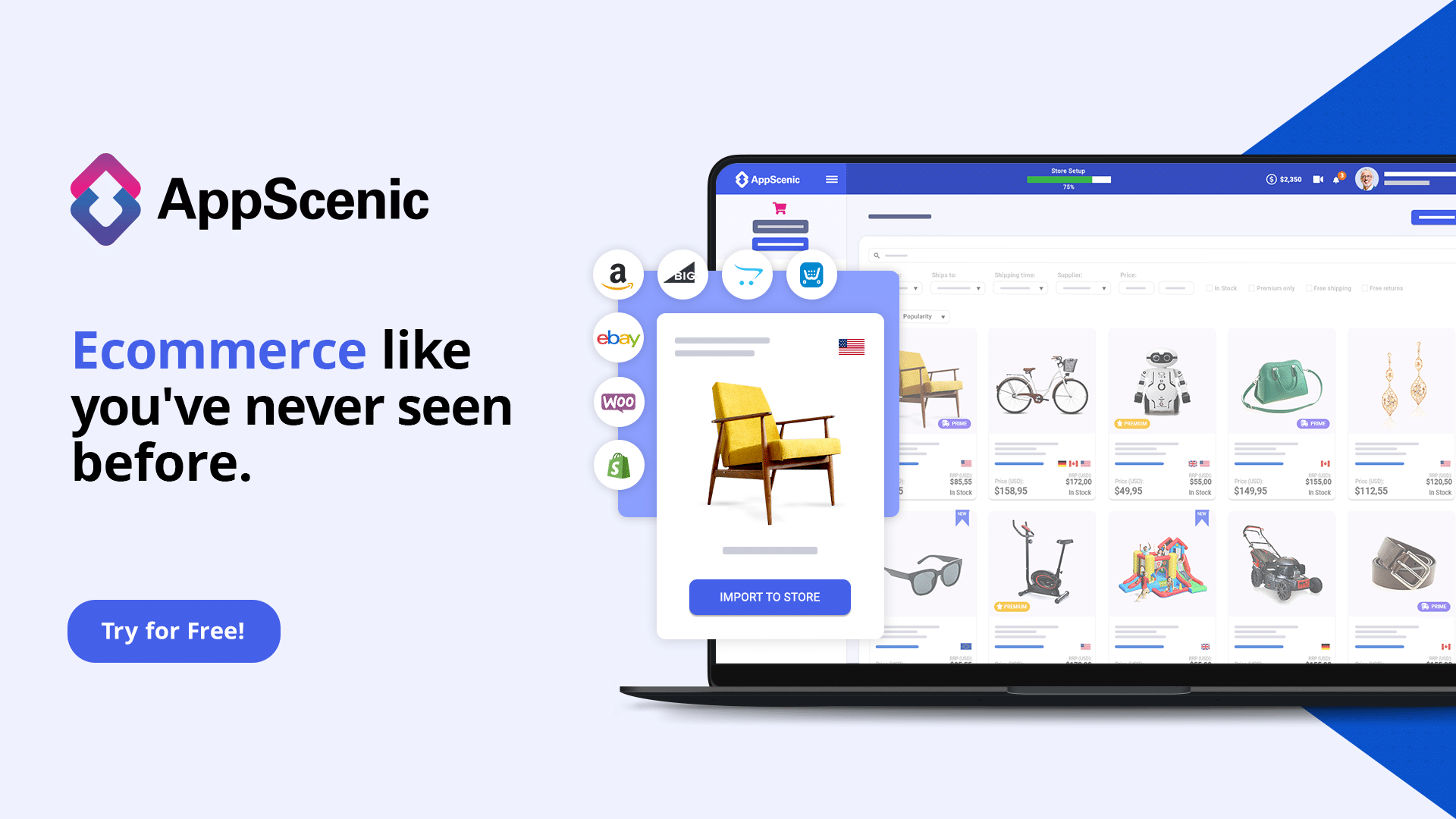 Appscenic
| 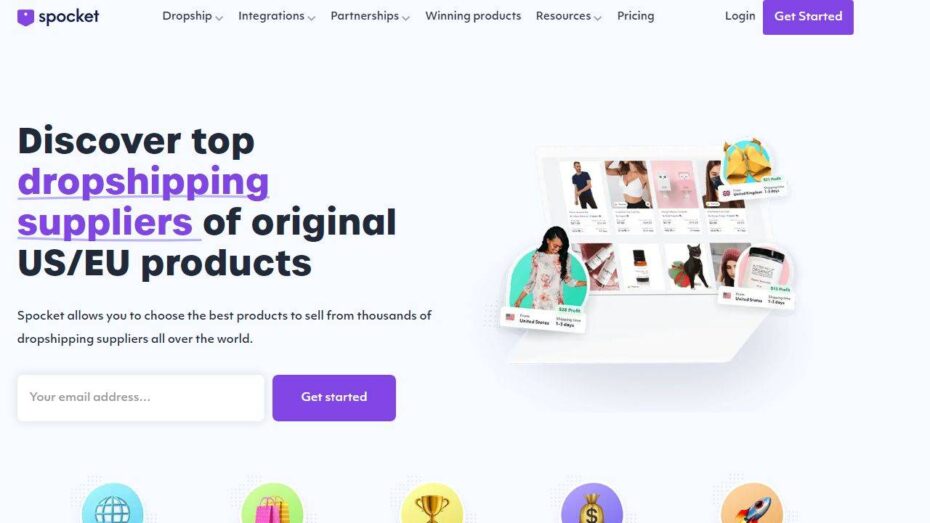 Spocket
|
Selecting Reliable Dropshipping Suppliers
Choosing the right suppliers is crucial for your dropshipping success. I recommend you to start by researching suppliers who have a good reputation and positive reviews. Platforms like AliExpress, Oberlo, and SaleHoo can help you find reputable suppliers. I advise you to look for suppliers with fast shipping times and high-quality products.
My suggestion is to communicate directly with potential suppliers. Ask about their shipping policies, return policies, and product quality. I think establishing a good relationship with your suppliers can ensure smoother operations and better customer satisfaction. Additionally, I believe that testing products yourself before selling them can help you verify their quality.
I point out that reliability is key. I advise you to choose suppliers who can consistently meet your demand and maintain inventory levels. Unreliable suppliers can lead to delays and unhappy customers, which can hurt your business. Therefore, I recommend having backup suppliers for critical products.
My advice is to regularly review supplier performance. Track their delivery times, product quality, and customer feedback. This data will help you identify any issues early and make informed decisions about continuing or ending your partnership with certain suppliers.
Setting Up Your E-commerce Store
Setting up an efficient e-commerce store is essential for your dropshipping business. I suggest using platforms like Shopify, WooCommerce, or BigCommerce, which are user-friendly and offer robust features. My recommendation is to choose a platform that integrates well with your chosen suppliers for seamless order processing.
I believe that a professional-looking website can build trust with your customers. I advise you to invest in a clean, responsive design that is easy to navigate. Ensure that your product pages are detailed and include high-quality images and descriptions. This will help potential customers make informed purchasing decisions.
I recommend optimizing your store for search engines. Use relevant keywords, in your product titles, descriptions, and meta tags. I think that this will improve your search engine rankings and attract organic traffic to your store.
My suggestion is to offer multiple payment options to accommodate different customer preferences. I advise you to include popular methods like credit cards, PayPal, and other online payment systems. Providing a smooth and secure checkout process can reduce cart abandonment rates and increase conversions.
Marketing Strategies to Drive Traffic to Your Store
Effective marketing is crucial for driving traffic and sales to your dropshipping store. I strongly believe that a mix of organic and paid strategies can yield the best results. My recommendation is to start with content marketing by creating valuable blog posts, guides, and videos that attract and engage your target audience.
I suggest using social media platforms to promote your products. I recommend you to create profiles on Facebook, Instagram, and Pinterest, where you can share high-quality images, run contests, and interact with your audience. Paid social media ads can also help you reach a broader audience quickly.
I point out that email marketing is another powerful tool. I advise you to build an email list and send regular newsletters with product updates, promotions, and valuable content. Personalized email campaigns can drive repeat sales and keep your audience engaged with your brand.
Finally, I recommend leveraging influencer marketing to expand your reach. Partnering with influencers who have a following in your niche can help you tap into new audiences and build credibility. I advise you to carefully select influencers whose values align with your brand for authentic and effective promotions.
Managing Customer Service and Returns Efficiently
Managing customer service and returns efficiently is vital for maintaining customer satisfaction and loyalty. I believe that providing excellent customer service can set your dropshipping business apart from competitors. My suggestion is to offer multiple channels for customer support, including email, live chat, and phone support.
I recommend you to respond promptly to customer inquiries and resolve issues quickly. I think that a responsive and helpful support team can turn a negative experience into a positive one, fostering customer loyalty. Additionally, I advise you to create a comprehensive FAQ section on your website to address common questions.
I point out that having a clear and fair return policy is essential. I advise you to make your return process as simple as possible for customers. Clearly outline the steps for returns and exchanges, and communicate your policy on your website. This transparency can build trust and reduce potential disputes.
Finally, my advice is to track and analyze customer feedback to identify areas for improvement. Regularly reviewing customer comments and complaints can provide valuable insights into your business operations. I recommend you to use this data to make necessary adjustments and enhance your overall customer experience.
Explore Freelancing for Flexible Income Streams
Freelancing is one of the most versatile ways to make money online, offering flexibility and the potential for high earnings. By leveraging your skills and expertise, you can work with clients worldwide and enjoy the freedom of being your own boss. I believe freelancing is an excellent option for anyone looking to diversify their income streams and achieve financial independence.
Most importantly, identifying high-demand skills, creating a strong online portfolio, finding work on popular platforms, and setting competitive rates are key steps to success. I recommend focusing on these areas to build a thriving freelancing career that provides both financial and personal fulfillment.
Identifying High-Demand Freelancing Skills
Choosing the right freelancing skills can significantly impact your success. I suggest starting by researching the current market trends and identifying high-demand skills. Fields like web development, graphic design, content writing, and digital marketing are consistently in demand. I recommend you to focus on skills that align with your interests and strengths.
My advice is to use platforms like Upwork, Fiverr, and LinkedIn to explore what skills are most sought after by clients. I believe that specializing in a niche can set you apart from the competition. For example, instead of just being a writer, you could focus on SEO writing or technical writing, which are highly valued.
I strongly believe that continuous learning is essential in freelancing. I suggest you to invest in online courses and certifications to enhance your skills and stay updated with industry standards. This not only improves your expertise but also makes you more attractive to potential clients.
I point out that showcasing your skills through personal projects can be beneficial. Creating a blog, portfolio website, or contributing to open-source projects can demonstrate your abilities and attract clients. I advise you to document these projects and highlight them in your portfolio to showcase your proficiency.
Building a Professional Online Portfolio
A professional online portfolio is crucial for showcasing your skills and attracting clients. I recommend you to create a website or use platforms like Behance, Dribbble, or LinkedIn to display your work. Your portfolio should include examples of your best work, detailed project descriptions, and client testimonials.
I suggest organizing your portfolio by skill or industry to make it easy for potential clients to navigate. I believe that including a variety of work samples can demonstrate your versatility and expertise. My recommendation is to focus on quality over quantity, highlighting projects that best represent your abilities.
I think that adding a personal touch to your portfolio can make you more relatable and memorable. I suggest you to include a brief bio, your professional journey, and your approach to work. This helps clients understand who you are and what you bring to the table.
Finally, I advise you to keep your portfolio updated with your latest work. Regularly adding new projects and achievements ensures that your portfolio remains current and relevant. I strongly believe that an up-to-date portfolio is key to attracting new opportunities and clients.
Finding Freelance Work on Popular Platforms
Finding freelance work can be challenging, but using popular platforms can simplify the process. I recommend starting with well-known sites like Upwork, Fiverr, Freelancer, and Toptal. These platforms connect freelancers with clients looking for various services, making it easier to find relevant opportunities.
My suggestion is to create a detailed and compelling profile on these platforms. I believe that including a professional photo, a strong bio, and a portfolio of your work can significantly increase your chances of getting hired. I advise you to tailor your profile to highlight your strengths and unique selling points.
I point out that applying for jobs strategically can improve your success rate. I recommend you to thoroughly read job descriptions and customize your proposals to address the client’s specific needs. Demonstrating that you understand their requirements and how you can help will set you apart from generic applications.
I strongly believe that building relationships with clients can lead to repeat work and referrals. I advise you to communicate clearly, meet deadlines, and deliver high-quality work. Happy clients are more likely to hire you again and recommend your services to others, creating a steady stream of work.
Setting Competitive Rates and Managing Client Relationships
Setting competitive rates is crucial for attracting clients while ensuring you are fairly compensated. I suggest researching industry standards and evaluating your experience and skill level to determine your rates. I recommend you to start with competitive pricing and gradually increase your rates as you gain more experience and positive reviews.
I believe that transparency with your clients is essential. I advise you to clearly communicate your rates, payment terms, and any additional costs upfront. This helps avoid misunderstandings and builds trust. I strongly believe that being upfront about your pricing shows professionalism and reliability.
Managing client relationships effectively can lead to long-term success. I suggest maintaining open and regular communication with your clients. Providing updates on project progress, addressing concerns promptly, and being responsive can enhance client satisfaction. I recommend you to use project management tools to stay organized and meet deadlines.
Finally, I advise you to seek feedback from your clients after completing projects. Constructive feedback can help you improve your services and demonstrate your commitment to excellence. I believe that a positive relationship with clients can lead to ongoing work, referrals, and a strong professional reputation.
Create and Sell Online Courses for Recurring Revenue
Creating and selling online courses is a fantastic way to make money online. By sharing your knowledge and expertise, you can generate recurring revenue and build a loyal audience. I believe that with the right approach, anyone can create a successful online course that provides genuine value to learners.
Most importantly, focus on choosing the right topics, developing engaging content, marketing your courses effectively, and selecting the best platforms for hosting and selling your courses. This comprehensive approach ensures that your online courses are not only profitable but also impactful for your students.
Choosing Topics for Your Online Courses
Choosing the right topics for your online courses is crucial for success. I recommend you to start by identifying your areas of expertise and passion. Most importantly, ensure that there is a demand for the topics you plan to teach. My suggestion is to conduct market research to find out what learners are interested in and what gaps exist in the market.
I believe that focusing on specific niches can set you apart from the competition. Instead of covering broad subjects, narrow down your topics to address specific needs and problems. I advise you to use keyword research tools to identify popular search terms related to your topics. This will help you create courses that are both relevant and searchable.
I strongly believe that validating your course idea before investing time in development is essential. I recommend you to create a pilot module or a free mini-course to gauge interest and gather feedback. This approach allows you to refine your course content based on real user input, ensuring that your final product meets the needs of your target audience.
My advice is to stay updated with industry trends and continuously seek opportunities to expand your knowledge. This will not only help you stay relevant but also provide you with fresh ideas for new courses. I suggest joining professional groups, attending webinars, and subscribing to industry publications.
Developing Engaging Course Content
Developing engaging course content is key to retaining students and ensuring their success. I suggest starting with a detailed course outline that breaks down the content into manageable modules and lessons. I believe that a well-structured course helps learners navigate the material and stay motivated.
I recommend incorporating a variety of content formats, such as videos, quizzes, interactive exercises, and downloadable resources. This keeps the learning experience dynamic and caters to different learning styles. I think that using storytelling techniques and real-life examples can make your content more relatable and engaging.
I point out that high-quality visuals and clear audio are essential for a professional-looking course. I advise you to invest in good recording equipment and editing software to produce polished content. Additionally, I strongly believe that adding captions and transcripts can make your course more accessible to a broader audience.
My suggestion is to include regular assessments and feedback opportunities to help learners track their progress. This can include quizzes, assignments, and peer reviews. I recommend you to provide personalized feedback to students, as it enhances their learning experience and encourages them to stay engaged.
Marketing Your Online Courses Effectively
Effective marketing is crucial for attracting students to your online courses. I strongly believe that a multi-channel marketing strategy can yield the best results. My recommendation is to start with content marketing by creating blog posts, videos, and social media content that showcases your expertise and promotes your courses.
I suggest leveraging email marketing to nurture leads and convert them into paying students. I advise you to build an email list and send regular newsletters with valuable content, course updates, and exclusive promotions. Personalized email campaigns can significantly boost your conversion rates.
I think that partnering with influencers and industry experts can expand your reach. I recommend collaborating on webinars, guest posts, and joint ventures to tap into their audience. This approach not only increases your visibility but also builds credibility and trust with potential students.
Finally, I advise you to use paid advertising to drive targeted traffic to your course landing pages. Platforms like Google Ads, Facebook Ads, and LinkedIn Ads allow you to reach specific demographics interested in your course topics. I suggest testing different ad creatives and targeting options to optimize your campaigns and maximize your return on investment.
Platforms for Hosting and Selling Your Courses
Choosing the right platforms for hosting and selling your online courses is essential for a seamless user experience. I recommend starting with popular platforms like Teachable, Thinkific, and Udemy, which offer user-friendly interfaces and robust features. These platforms handle the technical aspects, allowing you to focus on creating and marketing your content.
I advise you to consider the pricing models and revenue shares of different platforms. Some platforms charge a monthly fee, while others take a percentage of your sales. My suggestion is to compare these costs and choose the one that aligns with your budget and revenue goals.
I believe that having your own branded website can enhance your credibility and control over your courses. Platforms like WordPress with LMS plugins such as LearnDash or Tutor LMS allow you to create a customized learning experience. I recommend you to integrate your website with payment gateways and email marketing tools for a seamless operation.
Finally, I point out that offering your courses on multiple platforms can increase your reach. I advise you to list your courses on various marketplaces and promote them through your website and social media channels. This approach diversifies your income streams and makes your courses accessible to a wider audience.
Profit from Selling Digital Products Online
Selling digital products is one of the best ways to make money online. By leveraging your skills and creativity, you can create and sell products with minimal overhead costs. I believe that with the right approach, anyone can build a successful digital product business that generates consistent revenue.
Most importantly, focus on creating high-quality digital products, developing effective pricing strategies, choosing the best platforms to sell on, and implementing robust marketing techniques. This comprehensive approach will help you maximize your profits and reach a wider audience.
Types of Digital Products You Can Create
There are numerous types of digital products you can create to make money online. I recommend starting with eBooks, as they are relatively easy to produce and can cover a wide range of topics. Whether it’s a how-to guide, a novel, or an industry-specific manual, eBooks offer a lot of potential for profit.
My suggestion is to consider creating online courses if you have expertise in a particular field. I believe that video courses, webinars, and workshops can provide significant value to your audience. These formats allow you to share your knowledge in a more engaging and interactive way.
I strongly believe that templates and printables are also excellent digital products. These can include anything from business templates, like spreadsheets and planners, to creative printables, like art prints and coloring pages. I point out that these products are highly customizable and can cater to various niches.
Finally, I advise you to explore the creation of software or mobile apps if you have the technical skills. Digital tools and apps that solve specific problems or improve productivity can attract a dedicated user base. This category of digital products often has high earning potential due to recurring subscription models.
Pricing Strategies for Digital Products
Setting the right price for your digital products is crucial for attracting customers and maximizing profits. I recommend researching your market to understand what similar products are being sold for. This will give you a benchmark to start with and help you position your product competitively.
My advice is to consider the value your product offers when setting your price. If your product provides significant benefits or solves a critical problem, you can charge a premium. I believe that offering different pricing tiers, such as basic, premium, and deluxe packages, can cater to various customer segments and increase your overall sales.
I suggest experimenting with promotional pricing strategies, such as discounts, limited-time offers, and bundling products. These tactics can create a sense of urgency and encourage more purchases. I think that regularly evaluating the effectiveness of your pricing strategies and making adjustments based on customer feedback and sales data is essential.
I point out that transparency is key when it comes to pricing. Clearly communicate the features and benefits of your product at each price point. This helps potential customers understand the value they are getting and makes them more likely to make a purchase. I strongly believe that clear and honest pricing builds trust and enhances your brand reputation.
Platforms to Sell Your Digital Products
Choosing the right platforms to sell your digital products is vital for reaching your target audience. I recommend starting with well-known marketplaces like Etsy, Gumroad, and Amazon Kindle Direct Publishing for eBooks. These platforms have large user bases and provide various tools to help you market your products.
My suggestion is to use your own website to sell digital products directly. I believe that platforms like Shopify, WooCommerce, and BigCommerce offer robust solutions for creating an online store. Selling through your own site allows you to have full control over your branding, customer experience, and pricing.
I strongly believe that utilizing online course platforms like Teachable, Thinkific, and Udemy can be beneficial if you are offering educational content. These platforms provide the infrastructure needed to host and deliver online courses, as well as marketing tools to attract students.
I advise you to explore niche-specific platforms depending on your product type. For example, Creative Market is great for selling design assets, while CodeCanyon is perfect for software and plugins. I point out that choosing the right platform can significantly impact your sales and customer reach.
Marketing Tips to Boost Digital Product Sales
Effective marketing is essential to boost your digital product sales. I recommend starting with content marketing by creating valuable blog posts, videos, and social media content related to your products. I believe that this approach helps establish your authority and attract organic traffic to your sales pages.
My advice is to leverage email marketing to nurture leads and convert them into customers. Building an email list and sending regular newsletters with product updates, promotions, and valuable content can significantly increase your sales. I strongly believe that personalized email campaigns are particularly effective.
I suggest using social media advertising to reach a broader audience. Platforms like Facebook, Instagram, and Pinterest offer targeted advertising options that can help you connect with potential customers. I recommend you to create engaging ads that highlight the benefits of your products and include strong calls-to-action.
Finally, I advise you to collaborate with influencers and affiliates to expand your reach. Partnering with individuals who have a large following in your niche can drive traffic and sales. I point out that offering affiliate commissions can incentivize others to promote your products, creating a win-win situation for both parties.
Develop Websites for Clients and Passive Income
Developing websites is a fantastic way to make money online while building a steady stream of passive income. By creating high-quality websites for clients, you can establish a reputable business and earn ongoing revenue through maintenance and support services. I believe that mastering web development skills and effectively marketing your services are key to success in this field.
Most importantly, focus on acquiring the essential skills, building a strong portfolio, finding clients, and offering comprehensive maintenance services. This comprehensive approach will help you create a sustainable web development business that generates consistent income.
Web Hosting Recommendations
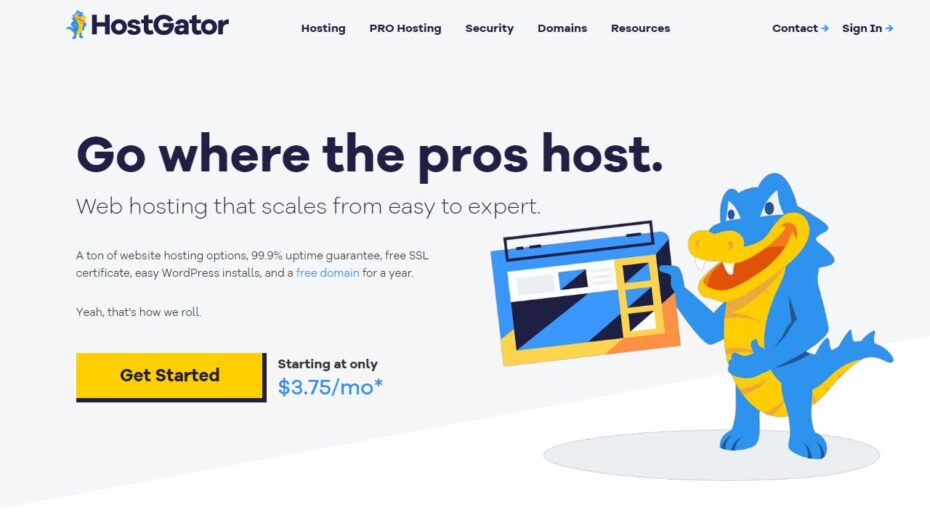 Hostgator
| 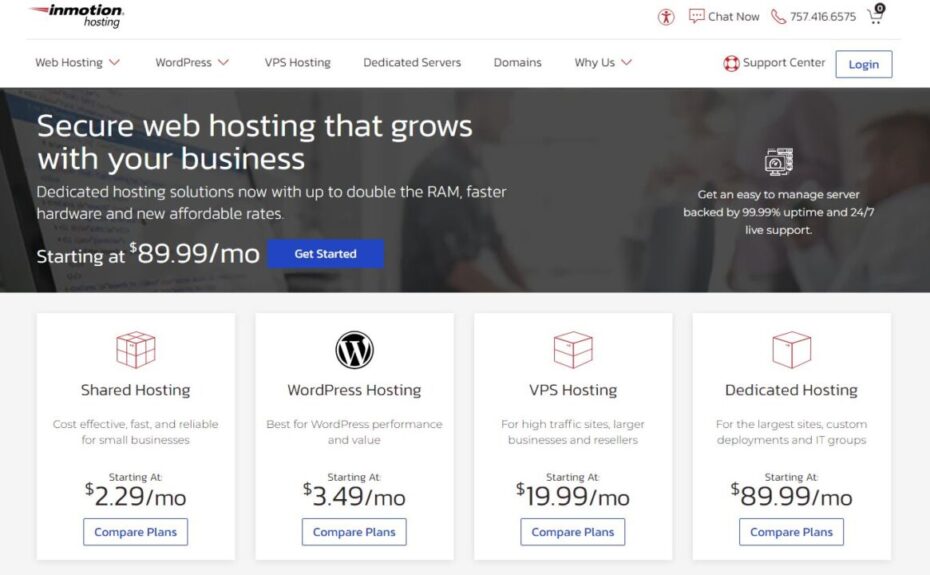 Inmotion
|  Hostinger
|
Essential Skills for Web Development
Mastering essential web development skills is crucial for delivering top-notch services to your clients. I recommend you to start with learning HTML, CSS, and JavaScript, as these are the foundational technologies for web development. I think having a solid grasp of these languages will enable you to create visually appealing and functional websites.
My advice is to also learn server-side programming languages like PHP, Python, or Ruby. These languages are essential for creating dynamic and interactive websites. I suggest you to explore frameworks such as Django or Ruby on Rails, which can streamline the development process and improve your efficiency.
I point out that understanding responsive design principles is essential in today’s mobile-first world. I believe that using frameworks like Bootstrap can help you create websites that look great on all devices. My recommendation is to also learn about user experience (UX) design to ensure that your websites are user-friendly and intuitive.
Finally, I strongly believe that continuous learning is vital in web development. I advise you to stay updated with the latest trends and technologies by taking online courses, reading industry blogs, and participating in forums. This will keep your skills sharp and make you more competitive in the market.
Building a Web Development Portfolio
A strong web development portfolio is essential for showcasing your skills and attracting clients. I recommend you to create a professional portfolio website that highlights your best work. Include detailed descriptions of each project, the technologies used, and the challenges you overcame. I believe that this demonstrates your expertise and problem-solving abilities.
I suggest including a variety of projects in your portfolio to show your versatility. I think that showcasing different types of websites, such as e-commerce sites, blogs, and corporate websites, can attract a broader range of clients. My advice is to include testimonials from satisfied clients to add credibility to your portfolio.
I point out that personal projects can also enhance your portfolio. I recommend you to create sample websites or contribute to open-source projects to demonstrate your skills. These projects can be particularly useful if you are just starting and don’t have many client projects to showcase.
Finally, I advise you to keep your portfolio updated with your latest work. Regularly adding new projects and skills ensures that your portfolio remains current and relevant. I strongly believe that an up-to-date portfolio will help you attract more clients and secure more projects.
Finding Clients and Securing Projects
Finding clients and securing projects is essential for growing your web development business. I suggest starting with online freelance platforms like Upwork, Freelancer, and Fiverr. These platforms can help you find clients looking for web development services. My recommendation is to create a compelling profile and tailor your proposals to each client’s needs.
I believe that networking is another powerful way to find clients. I advise you to attend industry events, join professional groups, and participate in online forums related to web development. Building relationships with other professionals can lead to referrals and new opportunities.
I point out that having a strong online presence can attract clients. I recommend you to maintain active profiles on social media platforms like LinkedIn, Twitter, and Facebook. Sharing your expertise through blog posts, tutorials, and case studies can establish you as an authority in your field and attract potential clients.
Finally, I strongly believe that providing excellent service to your clients is key to securing repeat business and referrals. I advise you to communicate clearly, meet deadlines, and deliver high-quality work. Satisfied clients are more likely to recommend you to others and hire you for future projects.
Offering Maintenance and Support Services
Offering maintenance and support services is a great way to generate passive income from your web development business. I recommend you to offer packages that include regular updates, security monitoring, and technical support. These services provide ongoing value to your clients and ensure their websites remain secure and functional.
I suggest setting up a subscription model for your maintenance services. I think this can provide you with a steady stream of income and make it easier for clients to budget for these services. My advice is to offer different tiers of service to cater to various client needs and budgets.
I point out that providing exceptional customer service is crucial for retaining clients. I believe that being responsive and proactive in addressing issues can build trust and loyalty. I advise you to use tools like helpdesk software to manage support requests efficiently and ensure that all client inquiries are handled promptly.
Finally, I recommend continuously improving your maintenance services based on client feedback and industry developments. I strongly believe that staying updated with the latest security threats and technological advancements will help you provide the best possible service to your clients. This proactive approach can differentiate you from competitors and enhance your reputation.











